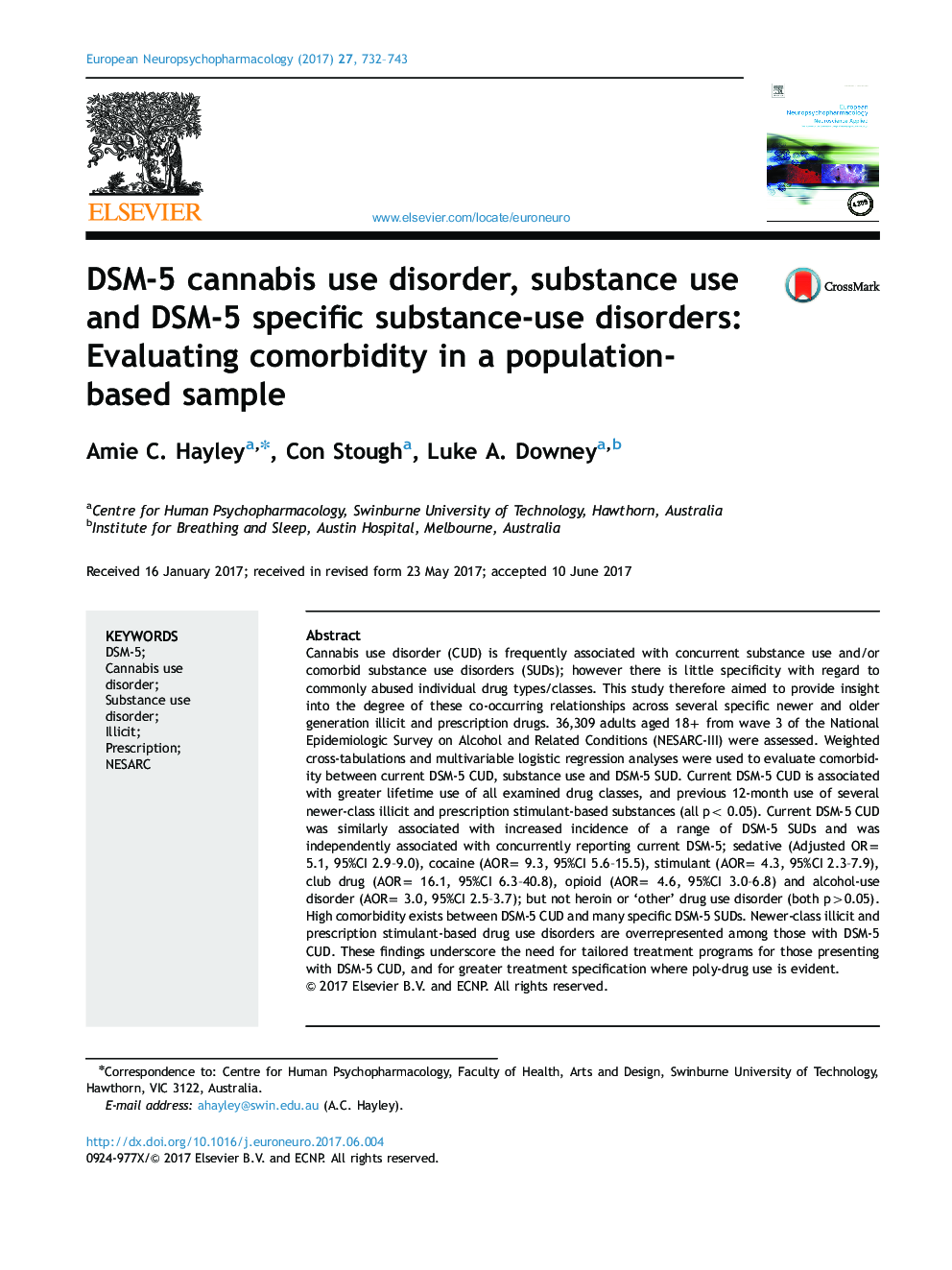| کد مقاله | کد نشریه | سال انتشار | مقاله انگلیسی | نسخه تمام متن |
|---|---|---|---|---|
| 4930369 | 1363336 | 2017 | 12 صفحه PDF | دانلود رایگان |
عنوان انگلیسی مقاله ISI
DSM-5 cannabis use disorder, substance use and DSM-5 specific substance-use disorders: Evaluating comorbidity in a population-based sample
دانلود مقاله + سفارش ترجمه
دانلود مقاله ISI انگلیسی
رایگان برای ایرانیان
کلمات کلیدی
موضوعات مرتبط
علوم زیستی و بیوفناوری
علم عصب شناسی
روانپزشکی بیولوژیکی
پیش نمایش صفحه اول مقاله

چکیده انگلیسی
Cannabis use disorder (CUD) is frequently associated with concurrent substance use and/or comorbid substance use disorders (SUDs); however there is little specificity with regard to commonly abused individual drug types/classes. This study therefore aimed to provide insight into the degree of these co-occurring relationships across several specific newer and older generation illicit and prescription drugs. 36,309 adults aged 18+ from wave 3 of the National Epidemiologic Survey on Alcohol and Related Conditions (NESARC-III) were assessed. Weighted cross-tabulations and multivariable logistic regression analyses were used to evaluate comorbidity between current DSM-5 CUD, substance use and DSM-5 SUD. Current DSM-5 CUD is associated with greater lifetime use of all examined drug classes, and previous 12-month use of several newer-class illicit and prescription stimulant-based substances (all p< 0.05). Current DSM-5 CUD was similarly associated with increased incidence of a range of DSM-5 SUDs and was independently associated with concurrently reporting current DSM-5; sedative (Adjusted OR= 5.1, 95%CI 2.9-9.0), cocaine (AOR= 9.3, 95%CI 5.6-15.5), stimulant (AOR= 4.3, 95%CI 2.3-7.9), club drug (AOR= 16.1, 95%CI 6.3-40.8), opioid (AOR= 4.6, 95%CI 3.0-6.8) and alcohol-use disorder (AOR= 3.0, 95%CI 2.5-3.7); but not heroin or 'other' drug use disorder (both p>0.05). High comorbidity exists between DSM-5 CUD and many specific DSM-5 SUDs. Newer-class illicit and prescription stimulant-based drug use disorders are overrepresented among those with DSM-5 CUD. These findings underscore the need for tailored treatment programs for those presenting with DSM-5 CUD, and for greater treatment specification where poly-drug use is evident.
ناشر
Database: Elsevier - ScienceDirect (ساینس دایرکت)
Journal: European Neuropsychopharmacology - Volume 27, Issue 8, August 2017, Pages 732-743
Journal: European Neuropsychopharmacology - Volume 27, Issue 8, August 2017, Pages 732-743
نویسندگان
Amie C. Hayley, Con Stough, Luke A. Downey,